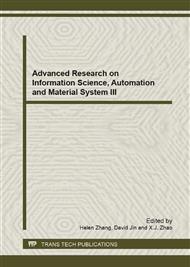p.195
p.200
p.204
p.208
p.212
p.217
p.221
p.227
p.231
A Mechanism Design of Friction and Wear Test Based on Liquid Medium
Abstract:
Friction and wear tester is an important device for detecting friction and wear properties of materials. There is inadequacy of research on friction and wear behavior of geological drilling mechanisms serving under complicated liquid circumstances like water, oil and mortar. This article describes an accessory mechanism for commonly used ball-on-disc tribometer which can be applicable in liquid medium. A new oil cup is designed and composed of oil cup sleeve, oil cup lid, transition station, worktable and etc. Interference connection is adopted between oil cup and rotary test bench of tester. Materials are chosen so as to meet requirement from actual working conditions and to simulate the friction and wear test in liquid medium. The mechanism designed share characters of convenient operation, in-situ observation and friendly environment.
Info:
Periodical:
Pages:
212-216
Citation:
Online since:
June 2013
Authors:
Keywords:
Price:
Сopyright:
© 2013 Trans Tech Publications Ltd. All Rights Reserved
Share:
Citation:


